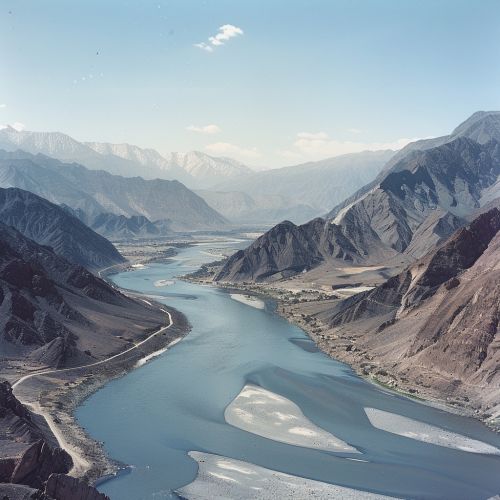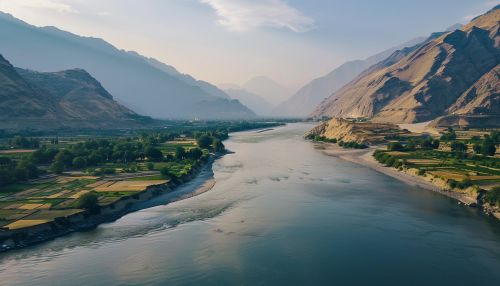Indus River
Geography
The Indus River is one of the longest rivers in Asia, flowing through three countries: China, India, and Pakistan. Originating in the Tibetan plateau in the vicinity of Lake Mansarovar, the river runs a course through the Ladakh region of India, towards Gilgit-Baltistan, and then flows in a southerly direction along the entire length of Pakistan, to merge into the Arabian Sea near the port city of Karachi in Sindh. The total length of the river is 3,180 km (1,980 mi).


Hydrology
The Indus River provides key water resources for the economy of Pakistan - especially the breadbasket of Punjab province, which accounts for most of the nation's agricultural production, and Sindh. It also supports many heavy industries and provides the main supply of potable water in Pakistan.
The river's flow is determined by the melting of the snows and glaciers of the Himalayas, Karakoram, and the Hindu Kush ranges in the summer, supplemented by rainfall in the monsoon season. The flow of the river is also determined by the use of its water for irrigation purposes.
Tributaries
The Indus River has several tributaries, including the Shyok, Gilgit, Kabul, Gomal, and the Jhelum and Chenab Rivers. The largest tributary, the Kabul River, merges with the Indus near Attock, Pakistan. The confluence of the rivers is a significant event in the hydrological cycle of the region, affecting flooding, irrigation, and hydroelectricity generation.
History
The Indus River has been a source of wonder since the dawn of civilization, with numerous ancient populations settling along its banks. The river is most closely associated with the Indus Valley Civilization, which was one of the earliest urban civilizations in the world. The civilization, which flourished between 2500 BC and 1900 BC, was largely based around the river.
Flora and Fauna
The Indus River supports a variety of wildlife and has a rich biodiversity. The river is home to the Indus River Dolphin, one of the world's rarest mammals and among its most endangered freshwater species. The upper reaches of the river near the Tibet Autonomous Region are also home to the snow leopard.
